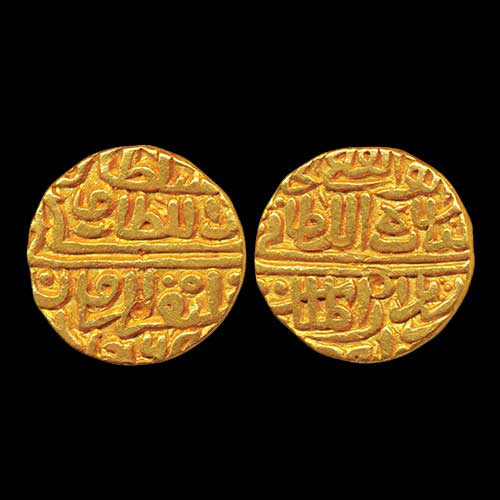Ghiyath Shah as Heir Apparent
2025-09-25 Thu
Ghiyath Shah was the ruler of the Malwa Sultanate, reigning from 1456 to 1500. From 1456 to 1469, he ruled as Heir Apparent, and from 1469 to 1500, he served as the Sultan of the Malwa Sultanate.Ghiyath Shah, the son of Mahmud I, began his career as a military leader under his father’s rule. Gradually, he assumed a more significant role in his father’s administration. When appointed Heir Apparent, he was granted the privilege of minting coins in his own name and issued coins with the WALI AHAD legend. The earliest known coin struck in his name dates to the Hijri year 861.
As the heir apparent, he issued coins in gold, silver, billon, and copper. In gold, he issued tankas (11 g) and half-tankas (5.4 g). In silver, he issued half-tankas weighing 5.4 g. In billon, he issued coins in two weight standards: 96 rati (10.7–11 g) and 100 rati (12.1 g). In copper, he issued Double Falus (8.5–9 g) and Copper Falus in two weight standards: 4.5 g and 3.6 g.
Image Courtesy: Todywalla Auction
Latest News
-
Malwa Sultan Mahmud Shah Silver Coins
2025-09-11 ThuMalwa Sultan Mahmud Shah minted silver coins in round and square flans. <br><br> For round coins,...
-
Malwa Sultan Mahmud Shah Billon coin
2025-08-26 TueMalwa Sultan Mahmud Shah's billon coins followed three weight standards: 100 rati, 96 rati, and 80 r...
-
Fascinating Archaeological Facts on Postage Stamps - 91
2025-08-23 SatRhinoceros is one of the oldest land mammal species existing in India. There are five species of rhi...
-
Fascinating Archaeological Facts on Postage Stamps - 90
2025-08-23 SatUthiramerur, a Village in Kanchipuram, Tamil Nadu, is notable for its Temple inscriptions that descr...
-
Fascinating Archaeological Facts on Postage Stamps - 89
2025-08-21 ThuThe term “millet” is derived from the Latin word “milum,” which translates to grain. millets...

